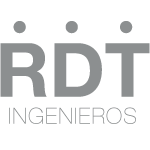The Life project NEEVE
Innovative technologies to monitor and reduce Non-Exhaust Emissions, particles and microplastics of VEhicles and pavements to improve air quality and human health
Photo: Vladimir Razgulyaev/mostphotos.com
About NEEVE
Particle and microplastics emission of road vehicles – A severe health problem
Transportation is one of the human activities with the greatest impact on air pollution. In 2020, the WHO (World Health Organisation) reported outdoor air pollution which is currently dominated by very fine particles with a diameter equal to or less than 2.5 µm, emitted largely by automobile traffic, causing the death of 4 million people per year worldwide, mainly because their effects in cardiopulmonary organs.
The Best Available Techniques Reference (BREF) document by European Environment Agency (EEA) (Eionet Report - ETC/ATNI 2020/5) highlighted that there are very few policy interventions to tackle the problem of the increase in particulate matter (PM) emissions from non-exhaust sources (sources other than from vehicle exhaust systems) due to the lack of guidelines and insufficient research. They established that non-exhaust PM emissions from transportation have already surpassed exhaust PM emissions in importance, first for PM10 and more recently for PM2.5 as well.
According to a recent European Environment Agency (EEA) report on Health and Environment, every year in the EU over 400,000 premature deaths are likely due to ambient air pollution. Moreover, the EU commission has estimated at least 330 billion euros annual economic cost for air pollution. Therefore, the commission has established the following set of targets to achieve by 2030 in the “EU Action Plan: Towards Zero Pollution for Air, Water and Soil”:
- Improving air quality to reduce the number of premature deaths caused by air pollution by 55%.
- Improving water quality by reducing waste, plastic litter at sea (by 50%) and microplastics released into the environment (by 30%)
- Reducing by 25% the EU ecosystems where air pollution threatens biodiversity.
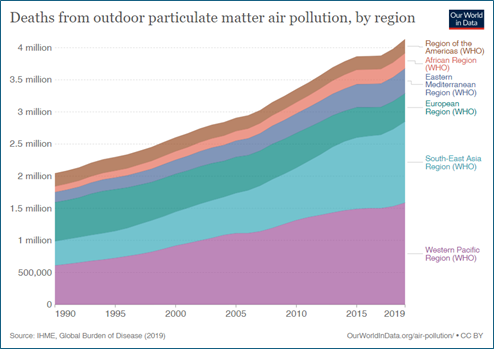
Fig.1. Deaths from outdoor particulate matter air pollution by region.
With the purpose of protecting air quality, European regulations (EURO) are introduced, which regulate the limits of polluting emissions from transport (e.g. EU 2018/1832). Implementation of stringent emission regulations and the growth of electric vehicles, mean that more attention should be shifted to road traffic-derived non-exhaust emissions (NEE).
According to the research literature and partner works, NEE are generated mostly by wear from brakes, tyres, and road surfaces (as illustrated in the NEEVE logotype). NEE particles from these sources account for nearly equal proportions in traffic-related emissions.
NEEVE’s general mission and purpose
NEEVE’s general mission is to address the abovementioned situation and give the various actors information, methods and tools to reduce the problems.
The main technological goal of the NEEVE project is to design, develop and demonstrate innovative techniques and methods for the measurement and reduction of non-exhaust emissions (particles and microplastics) from vehicle/road elements (brakes, tyres and pavements).
Furthermore, the non-technical goal of the NEEVE project is to supply guidance on how to replicate and exploit the innovative results in other road transport sectors (such as buses, trucks), as well as to promote and disseminate the awareness of NEE in society to influence the policy makers, vehicle manufacturers and drivers to change regulations, vehicle elements and driving behaviours to achieve the maximal reduction of the NEE.
Overall research method
To achieve the general goals, the NEEVE consortium plans to characterize, design and develop real-time onboard measurement systems for vehicles to measure and monitor NEE, such as the particle mass (e.g. PM10, PM2.5), particle number (PN), size and distribution, chemical analysis, as well as morphological analysis with electron microscopy. Moreover, NEEVE consortia will design, develop and test less polluting vehicle/road components (brake pads/discs, tyres, and pavements) in real pilot demonstrations to minimise the NEE of particles and microplastics due to the braking system, and the tyre-pavement interactions.
Some of the new components, such as brake pads/discs and new road pavements, will be offered commercially.
NEEVE will build on relevant research already performed on NEE by the partners and international consortia. In particular, the results and achievements of the Horizon 2020 project Low particle Emissions and lOw Noise Tyres (LEON-T) (leont-project.eu External link.), set to finish 30 November 2024, will constitute a solid ground for NEEVE in relevant parts.
External link.), set to finish 30 November 2024, will constitute a solid ground for NEEVE in relevant parts.
Partners
The consortium is composed of 10 partners as follows (partner acronyms in parenthesis):
- Seville University (US), Project Coordinator
- CHM, Obras e Infraestructuras S.A. (CHM)
- Centro de Investigaciones Energeticas, Medioambientales y Tecnologicas (CIEMAT)
- Horiba Europe GmbH (HORIBA)
- Icer Brakes S.A.(ICERBRAKES)
- Paudire Innova (PAUDIRE)
- RDT Ingenieros Madrid, S.L. (RDT)
- Universidad Miguel Hernandez de Elche (UMH)
- Swedish National Road and Transport Research Institute (VTI)
- Centro Tecnológico de Construcción (CTCON)
Horiba is from Germany and VTI is from Sweden, whereas the other eight are from Spain.
Logos with links to partners websites:
Work Packages and tasks
WP1 Project coordination and management
The main objective of WP1 is to continuously carry out review of the project progress in the scientific-technical and innovative, administrative, and legal-financial areas and the dissemination of the project achievements. This also includes among others the following special tasks:
- Administrative management and KPI reporting
- Technical and scientific coordination
- Quality, legal, risk & green management
WP2 State of art study, NEE characterisation & less-polluting designs
Its objectives are:
- A deep study of the potential effects of NEEVE results on the European Union's regulations, business, and policy
- State of Art analysis of current techniques for exhaust and non-exhaust measurement as well as new protocols and methodologies to enable accurate real-time measuring of NEE
- Design of a first prototype for real-time vehicle on-board measuring of NEE based and performing operation tests on a chassis dyno test bench.
- Investigate all different parameters that may affect particulate emissions from pavements in order to design a solution to improve conventional alternatives related to road NEE
- Design an innovative solution reducing NEE from brake pads/discs
- Study design of tyres for reducing particle emissions considering interactions of wear and NEE properties, as well as other functional properties (e.g., skid, rolling resistance, noise)
WP3 Development of innovative technologies to monitor and reduce NEE
Objectives are:
- Develop a functional module for real-time vehicle on-board measurement of NEE
- Produce new asphalt mixtures to create less polluting pavements by reducing wear and particle emissions
- Manufacture novel brake pads/discs to reduce NEE and environmental impact
- Study whether innovative tyres can reduce NEE without sacrificing other major performance
- Test a selection of tyres on the market to determine how much they differ in rubber wear and NEE and whether it seems meaningful to introduce a tyre tread wear label in the EU
- Determine the impact of NEE on human health with novel organoids
- Model the dispersion patterns and climate impact of the NEE in urban areas
WP4 Deployment & demonstration in controlled pilots and real-world scenarios
Objectives:
- Optimize NEE measuring operation and performance under real-world conditions for varying vehicle types.
- Installation and adjustment of the onboard module for the measurement of NEE, as well as novel brake pads/discs and tyres in 3 types of commercial vehicles in real conditions
- Deployment and validation of novel pavements and asphalt mixture for lower NEE in real scenarios.
- Demonstration and validation of the performance of onboard measuring modules, novel lower-NEE brakes, tyres and pavements for monitoring and reducing NEE in real driving.
WP5 Monitoring of KPI indicators and evaluation of the LIFE NEEVE impact
Objectives are:
- Specify and develop common methodology to monitor key performance indicators (KPIs).
- Assess the technical, environmental, social and economic impact of the project.
WP6 Replication, sustainability and exploitation of the LIFE NEEVE results
Objectives are:
- Implement and develop an effective communication and dissemination strategy to increase the awareness about measurement and reduction of non-exhaust emissions.
- Develop the protection and exploitation of intellectual property rights (IPR) and knowledge generated by NEEVE innovations.
- Assure that project outcomes are widely implemented, sustainable, and transferable to other road transport sectors and EU locations.
- Develop (individual and collaborative) successful business plans of NEEVE solutions to quicken uptake into worldwide markets.
Results and dissemination
Expected results and impacts
The following main results of project NEEVE are expected:
Technological impacts
First, the technological impacts are mentioned.
An onboard monitoring system for measuring non-exhaust emissions with an uncertainty for PM10 and PM2.5 of nearly 30% will be developed and demonstrated; later to be improved to about 10% uncertainty.
A new asphalt pavement will be developed, produced and deployed with the target to reduce approximately 20% of NEE in comparison with current asphalt solutions.
At least two new brake material formulations for pads and discs shall be developed and validated during the project’s implementation phase, with a target of approximately 30% reduction in particle emissions (PM10, PM2.5) from brake systems.
Tyres on the market with lower NEE emissions (without sacrificing other essential parameters) will be identified with the expectation that when these are used in traffic approximately 10% reduction in particle emissions in comparison with conventional tyres will be achieved.
By Computational Fluid Dynamic (CFD) simulations, to show the dispersion of particles, the aim is to achieve particle dispersion modelling with an accuracy of at least 70%. Optimization of particle dispersion modelling is estimated to reduce computational costs by 20%.
Three new organoids for testing the particle influence on human health (i.e. ocular, skin, lung) will be developed, supported by the detailed methodology and guidance to use them.
Environmental impacts
The following environmental impacts are expected:
Non-exhaust emissions from brakes, tyres and pavements are major sources of airborne particulate matter and microplastics. The new products are expected to achieve approxi-mately 30% reduction in brake emissions, 20% reduction in road surface emissions and 10% reduction in tyre emissions during the project's implementation phase. The successful reduction of emissions from brakes, tyres & road will positively impact air quality, leading to better health outcomes and enhancing the quality of life for EU citizens. However, note that exchange of brakes (vehicles), tyres and road pavements take time, and its impact will be spread over the next few years.
The project's focus on minimizing tyre abrasion and associated microplastic emissions will contribute to reducing microplastics in the environment, particularly in water bodies affected by road runoff, but it takes time until such impacts can be measured in rivers, seas and oceans.
Socio-economic impacts
Finally, there are socio-economic impacts, such as increased public awareness and behavioural change, and availability of close-to-market innovative products.
Potential users of NEEVE’s results
Private companies and corporations
The NEEVE project will be of great interest to private companies related to the vehicle/road sectors (brakes, tyres, pavements), not the least automotive and tyre industries. They will have the possibility of applying the developed products and replacing old ones with the novel NEEVE innovations that will emit less particles as will be demonstrated in the project.
Additionally, pavement and monitoring equipment manufacturers will be highly interested in NEEVE results, as it will develop green mixtures of pavement with less NEE and will develop onboard measurement protocols and system to monitor NEE from brakes, tyres, and road pavement.
International public authorities, municipalities and administrators
The EU and not the least its Directorate General for the Environment (responsible for EU environmental policy) as well as national authorities and policy makers will be a crucial target audience. The objective of their involvement is to increase their awareness that the proposed solution is an environmental alternative, so that the dialogue is not only informative, but also translates into practical dissemination and actions that drive change.
Scientific Community
Results will be presented at international conferences and published in peer-reviewed scientific journals. The dissemination and discussion of the results throughout the scientific community will be relevant to increase the validation of LIFE NEEVE. In addition, the University of Seville intends to organize a biannual scientific workshop to disseminate the most relevant results of the project among the relevant scientific community.
General public
The objective of the dissemination activities aimed at the general public will be to raise awareness about environmental problems related to the emission of non-exhaust particles. To reach non-technical audiences, most of the outreach material generated will be designed and written to target them (website, brochures, video, Layman report, policy briefs, etc.) and posted on local and social media.
Policy Makers
Policy makers will be regularly invited to attend or provide keynote addresses at diverse outreach events organised during the project lifetime. In this way, policy makers may obtain relevant recommendations to serve future policy priorities and can influence the future call objectives in future LIFE programme or other Horizon Europe programme call texts.
Dissemination and outreach
The aim of the dissemination activities is to create, update, and put into practise the NEEVE project's dissemination, communication, and stakeholder outreach strategy to increase awareness and influence among key actors. Those will be vehicle, tyre and brake manufacturers, vehicle drivers, and regional, national, and EU governments, with a view to change driving habits, offer improved vehicle/road components, and promote legal regulations for lower NEE. Communication of NEEVE project results to relevant EU institutions and policy makers are essential, e.g. to related Directorates, JRC, CEDR, CEN and the European
Environmental Agency, by arranging seminars and workshops as well as presenting results on relevant European conferences. Other LIFE projects related to NEE, will be approached at an early stage in the project, to inform about NEEVE objectives and elaborate on possible synergies or knowledge exchange.
Apart from the special outreach activities mentioned above, dissemination will be made by presenting conference papers at relevant conferences, producing journal articles, as well as informing about the project outcomes on NEEVE webpages on each partners website. Major social media will provide information about NEEVE and its progress and outcomes. Business and global strategies will also be part of the dissemination to increase NEEVE’s impact.
Latest posts
July 3, 2024
Kick-off meeting
The attendees at the kick-off meeting of NEEVE in Seville, Spain, on 26 June 2024.
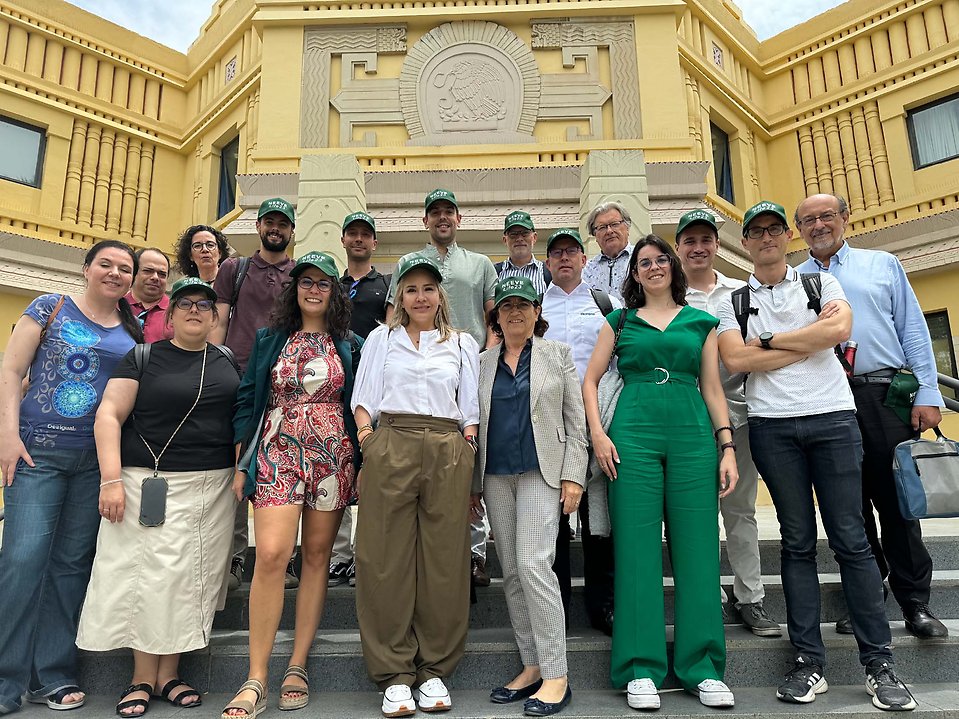
Photo by University of Seville.
VTI staff
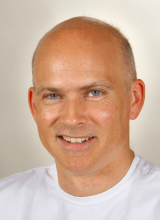
Dr. Mats Gustafsson
PhD in Physical Geography, Senior Researcher
Expertise in non-exhaust particles
Senior researcher and experienced project leader, with 20 years of experience working with non-exhaust particles from both road and railroad. A main focus has been emission, characterization and mitigation of wear particles and road dust as source to PM10. Gustafsson has lead numerous national and Nordic projects, participated in European projects like SPENS, CMA+ and uCARe and published over 100 papers, reports and conference papers on the subject of non-exhaust particles. Currently, he is very active in the LEON-T project. He has also been involved in development of new sampling techniques within the road dust area.

Dr. Ulf Sandberg
PhD in Measurement Technology, Senior Research Leader
Expertise in tyre/road interaction
He has been employed at VTI since 1974. During 6 years he was also a parttime Adjunct Professor in the Acoustics group at Chalmers University of Technology. His position at VTI is Senior Research Leader. Sandberg has worked with various subjects in the tyre/road interaction, such as noise and rolling resistance. He is probably best known for authoring the 640-page Tyre/Road Noise Reference Book (with Prof Ejsmont at TUG in Poland). Dr Sandberg received the prestigious 2017 Lifetime Achievement Award from Tire Technology International and has also a Lifetime Achievement Award from the International Friction Pavement Association. During his long career, many of his projects have dealt with innovations in tyre and road pavement technologies; and currently he is WP Leader of the work with developing an innovative airless truck tyre in the LEON-T project. He has also worked for three decades as a convenor and project leader in ISO groups and has led the development of more than 10 international or European measurement standards.

Dr. Ida Järlskog
PhD in Civil and Environmental Engineering, Researcher
Expertise in traffic-derived microplastics
To be supplemented
Partners' NEEVE webpages
The following NEEVE partners have webpages for their contributions in the project (missing links will be added when available):
Partner and acronym | Country | Link to NEEVE webpages | Notes |
|---|---|---|---|
Seville University (US) | ES | Project Coordinator | |
CHM, Obras e Infraestructuras S.A. (CHM) | ES | ||
Centro de Investigaciones Energeticas, Medioambientales y Tecnologicas (CIEMAT) | ES | ||
Horiba Europe GmbH (HORIBA) | DE and JP | ||
Icer Brakes S.A. (ICERBRAKES) | ES | ||
Paudire Innova (PAUDIRE) | ES | https://www.paudire.com/proyectos/tecnologia-para-monitorear-y-reducir-las-emisiones-de-vehiculos-y-pavimentos/ External link. External link. | Impacts and replication plan |
RDT Ingenieros Madrid, S.L. (RDT) | ES | ||
Universidad Miguel Hernandez de Elche (UMH) | ES | ||
Swedish National Road and Transport Research Institute (VTI) | SE | NEEVE Master webpages | |
Centro Tecnológico de Construcción (CTCON) | ES |
Related projects
LEON-T – Low particle Emissions and lOw Noise Tyres
LEON-T is a Horizon 2020 project running from 2021 to 2024. Two of the Work Packages are of crucial importance to NEEVE, namely:
- WP2 with the objective ”Standardisation of test setup for tyre abrasion rate measurement”. The main intention is to propose in detail a validated in-vehicle test setup and procedure for the determination of tyre abrasion rate, suitable for consumer-oriented labelling of tyres.
- WP3 with the objective ”Environmental dispersion of tyre-generated microplastics”. The main intention is to use the knowledge gained in WP2 to calibrate and parametrise the existing SimpleBox4Nano (SB4N) model on tyre-generated microplastics dispersion in the environment, and to validate this model through field measurements.
There is also a WP about Mitigating policy measures.
The project ends 30 November 2024. NEEVE will extensively consider the results of LEON-T.
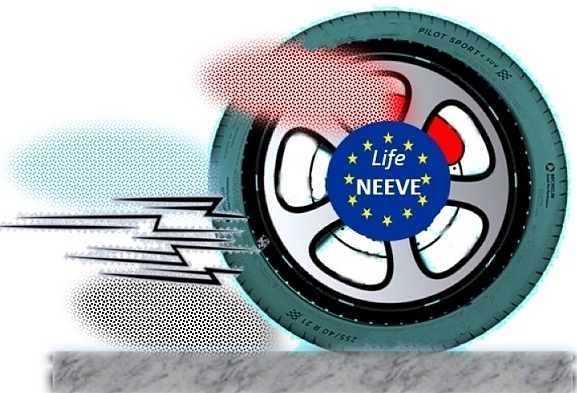
The NEEVE project in brief
Period: 2024–2028
Partners: 10
Countries: 3
Budget: 4.3 million EUR
Funded by:
The Life programme of the European Union under the agreement number: Project 101148428 — LIFE23-ENV-ES-LIFE NEEVE
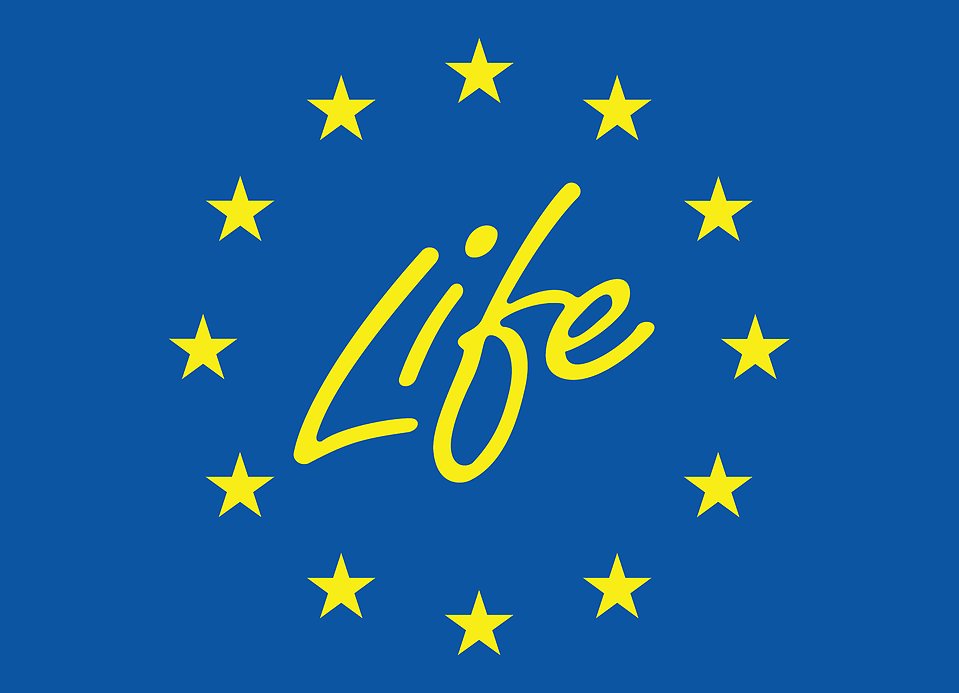
Disclaimer: Views and opinions expressed on this website are those of the author(s) only and do not necessarily reflect those of the European Union or CINEA. Neither the European Union nor the granting authority can be held responsible for them.
Contact
Mats Gustafsson, Senior Researcher
mats.gustafsson@vti.se
Ulf Sandberg, Senior Research Leader
ulf.sandberg@vti.se


